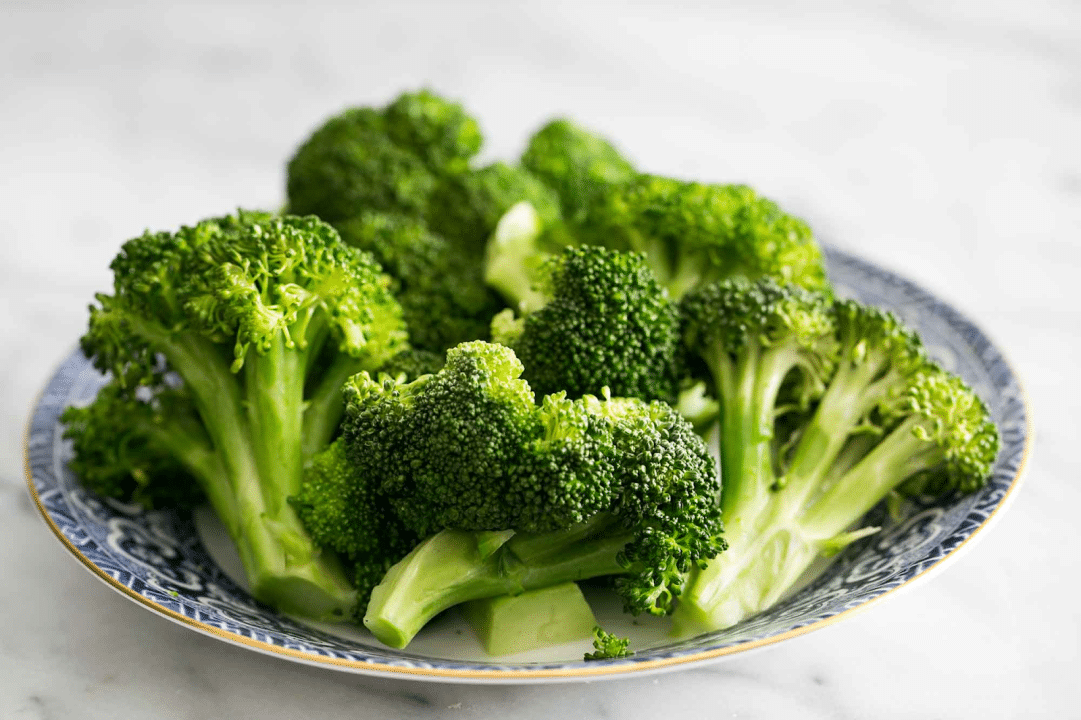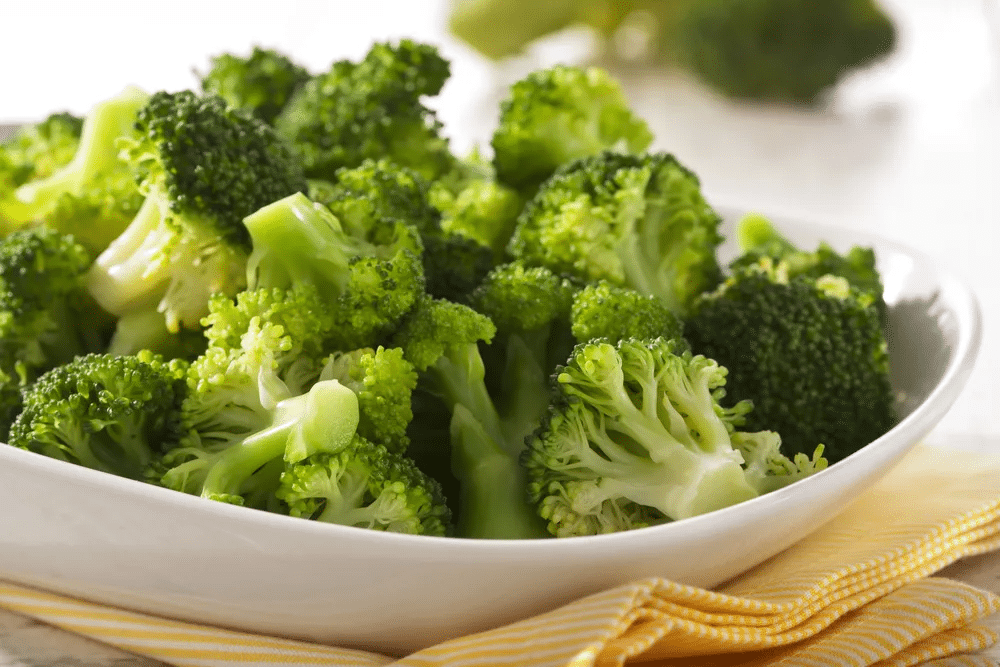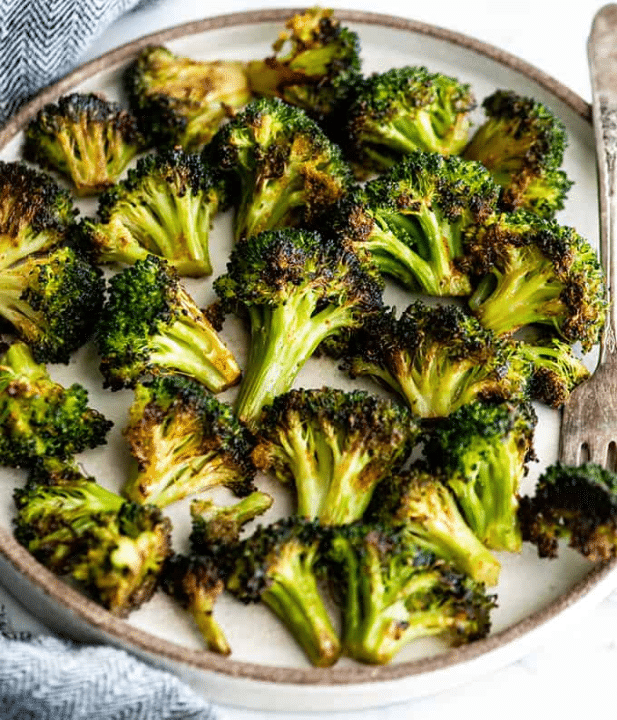No products in the cart.
0 - £0.00
- 0 items
- view cart
No products in the cart.
Broccoli, a cruciferous vegetable known for its vibrant green color and delicious taste, is packed with essential nutrients and health benefits. While many people prefer traditional cooking methods, such as boiling or steaming, using the microwave can be a quick and convenient way to prepare broccoli without sacrificing its nutritional value.
In this article, we’ll show you how to cook broccoli in the microwave the right way, discuss its nutritional benefits, provide tips on buying fresh broccoli versus frozen and discuss some of the other ways to cook broccoli that add a delicious twist on this green superfood’s taste.

Whether it’s a crisp and refreshing addition to your salad, a satisfying side dish, or the star of a mouthwatering stir-fry, broccoli can revolutionize your healthy meals. Packed with essential vitamins, minerals, and antioxidants, this versatile veggie is a superhero in the world of nutrition.
Cooking broccoli in the microwave is a simple and time-saving method that retains the vegetable’s vibrant color and preserves its nutritional content. Here’s a step-by-step guide to microwaving broccoli:
Wash the broccoli thoroughly under cold water to remove any dirt or debris. Pat it dry with a clean cloth or paper towel.
Cut the broccoli florets into bite-sized pieces. You can also peel and chop the stem if you like, as it is edible and contains valuable nutrients.
Place the broccoli florets in a microwave-safe dish or bowl. Add a small amount of water, approximately 2 tablespoons, to the dish. This will help create steam and prevent the broccoli from drying out.
Cover the dish with a microwave-safe lid or use microwave-safe plastic wrap to create a vented seal. This will allow the steam to circulate and cook the broccoli evenly.
Microwave the broccoli on high power for about 3-4 minutes. The exact cooking time may vary depending on your microwave’s wattage and the desired tenderness of the broccoli. Check the broccoli halfway through cooking and stir gently to ensure even cooking.
Carefully remove the dish from the microwave using oven mitts or a towel, as it will be hot. Uncover the dish, and let the broccoli sit for a minute or two before serving.
Season the cooked broccoli with a sprinkle of salt, a drizzle of olive oil, or a squeeze of lemon juice to enhance the flavor, if desired.

Broccoli is not only delicious but also highly nutritious. It is a rich source of essential vitamins, minerals, and fiber. Here are some of the key health benefits associated with eating your broccoli:

When it comes to buying broccoli, both fresh and frozen options have their advantages. Here are some tips to consider:
While fresh broccoli offers the advantage of immediate use and the enjoyment of its crisp texture, frozen broccoli can be a convenient option as it is pre-cut, requires no preparation, and can be stored for an extended period. It also retains much of its nutritional value due to the quick freezing process.
Aside from microwaving, there are plenty of other delicious ways to prepare broccoli. Here are a few popular cooking methods that bring out different flavors and textures:
Steaming: Steaming broccoli helps retain its vibrant color, nutrients, and a pleasant crunch. To steam broccoli, place florets in a steamer basket or colander over boiling water. Cover and steam for about 5-7 minutes until tender but still crisp. Serve immediately with a drizzle of lemon juice or a sprinkle of grated cheese.
Roasting: Roasting broccoli intensifies its natural sweetness and adds a delightful charred flavor. Preheat your oven to (220°C. Toss broccoli florets with olive oil, salt, and pepper, then spread them out in a single layer on a baking sheet. Roast for approximately 20-25 minutes, turning once halfway through, until the edges are crispy and golden. Add a squeeze of fresh lemon juice or a sprinkle of vegan cheese for an extra burst of flavor.
Stir-Frying: Stir-frying broccoli quickly cooks it while retaining a slight crunch. Heat a tablespoon of oil in a wok or skillet over high heat. Add the broccoli florets and any other desired vegetables, such as bell peppers or carrots, and stir-fry for 3-5 minutes until crisp-tender. You can add garlic, ginger, soy sauce, or other seasonings to enhance the flavours. Serve over steamed rice or noodles for a satisfying meal.
Blanching: Blanching broccoli involves briefly boiling it and then plunging it into ice water to preserve its vibrant color and crispness. Bring a pot of water to a boil, add the broccoli florets, and cook for about 2-3 minutes until they turn bright green. Immediately transfer them to a bowl of ice water to stop the cooking process. Once cooled, drain the broccoli and use it in salads, pasta dishes, or as a side dish.
Grilling: Grilling broccoli gives it a smoky flavor and a delightful char. Preheat your grill to medium-high heat. Toss broccoli florets with olive oil, salt, and pepper. Place them directly on the grill grates or use a grill basket to prevent them from falling through. Grill for about 5-7 minutes, turning occasionally, until charred and tender. Sprinkle with lemon zest or a drizzle of balsamic glaze for added tanginess.
These cooking methods offer various textures and flavours, allowing you to enjoy broccoli in different ways. You can also experiment with seasonings, herbs, and sauces to create your own unique and tasty broccoli dishes.
While it is possible to microwave broccoli without adding water, it is generally recommended to add a small amount of water to create steam. This helps in cooking the broccoli evenly and prevents it from drying out during the microwaving process.
To steam broccoli on the stovetop, bring a pot of water to a boil and place the broccoli florets in a steamer basket or colander above the boiling water. Cover and steam for approximately 5-7 minutes or until the broccoli is tender yet still retains some crunch. Adjust the steaming time based on your desired level of tenderness.
Yes, broccoli can be enjoyed raw! It adds a refreshing crunch to salads or can be served as a healthy snack with a dip. Raw broccoli is packed with nutrients and provides a different texture and flavor profile compared to cooked broccoli.
To store leftover cooked broccoli, allow it to cool completely and then transfer it to an airtight container or a zip-top bag. Place it in the refrigerator and consume it within 3-4 days. Reheating cooked broccoli in the microwave or on the stovetop is a quick way to enjoy it again.
Yes, you can freeze cooked broccoli. However, it may result in a softer texture compared to fresh or freshly cooked broccoli. To freeze cooked broccoli, ensure it is completely cooled, place it in a freezer-safe container or bag, and store it in the freezer for up to 3 months. Thaw it in the refrigerator before using or add it directly to soups, stews, or casseroles.
Besides the traditional choice, serving broccoli as a side dish, there are lots of creative ways to incorporate it into your healthy meals. You can blend steamed broccoli into a creamy soup, add it to pasta dishes or stir-fries, make broccoli fritters or patties, or even use it as a pizza topping. Get creative and experiment with different recipes to explore the versatility of this fantastic vegetable.
⭐️⭐️⭐️⭐️⭐️ Plant Sumo’s Soul Curry has been the perfect fully plant based substitute for my favorite curry dishes and I look forward to this option with each order :) – Lydia Sims
Plant Sumo is a part of the Pearl Lemon Group . We also run three Cafe’s – Pearl Lemon Café (w/lots of plants), Pearl Lemon Catering, Pearl Lemon Boba, and How Matcha (come visit) in London!
© All Rights Reserved | Company Number: 10411490 | VAT Number: 252 7124 23 | Sitemap